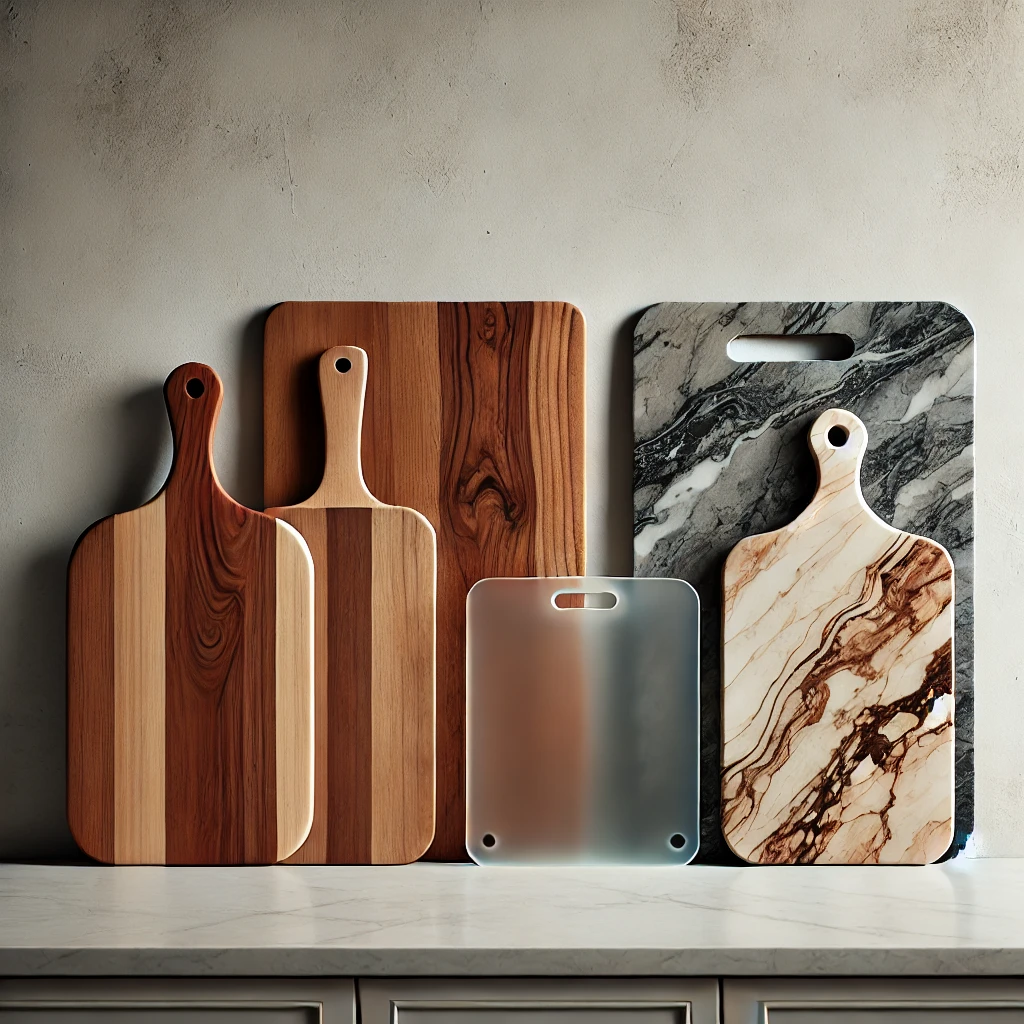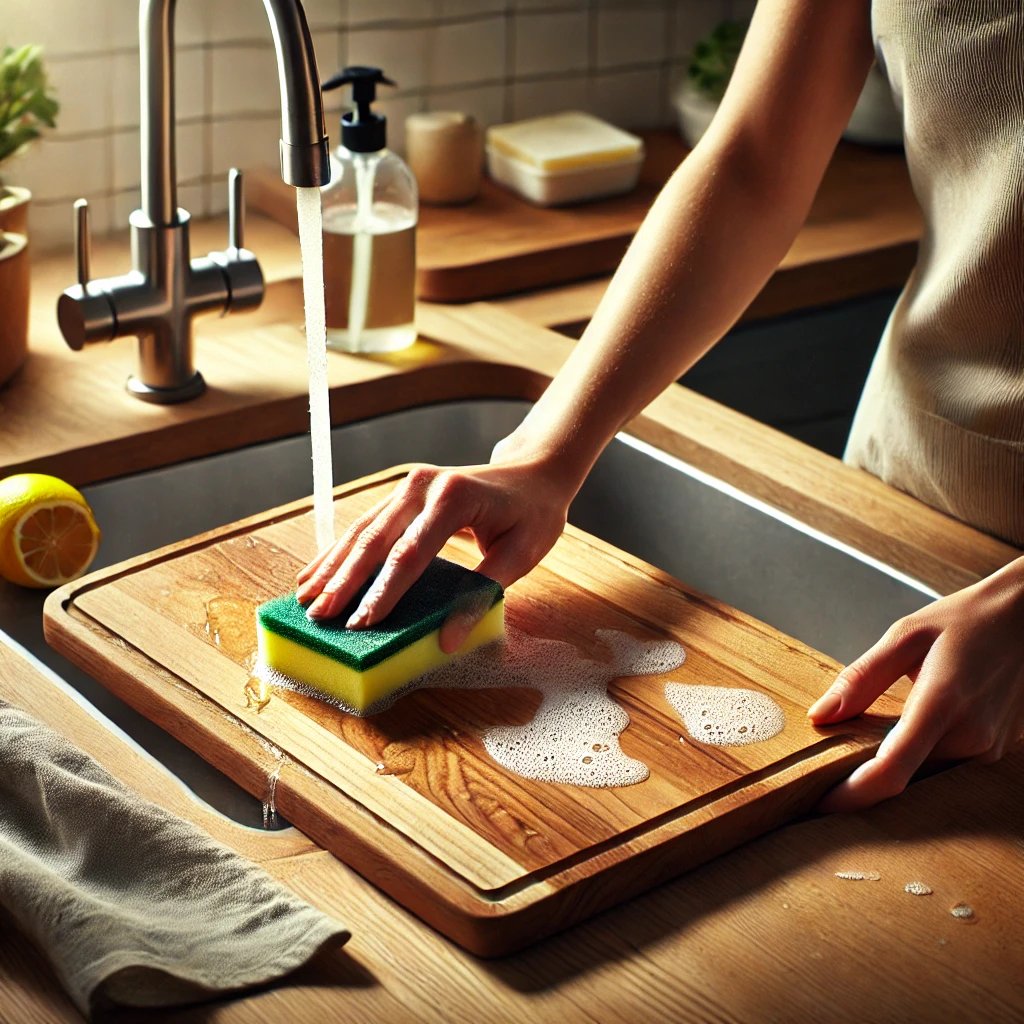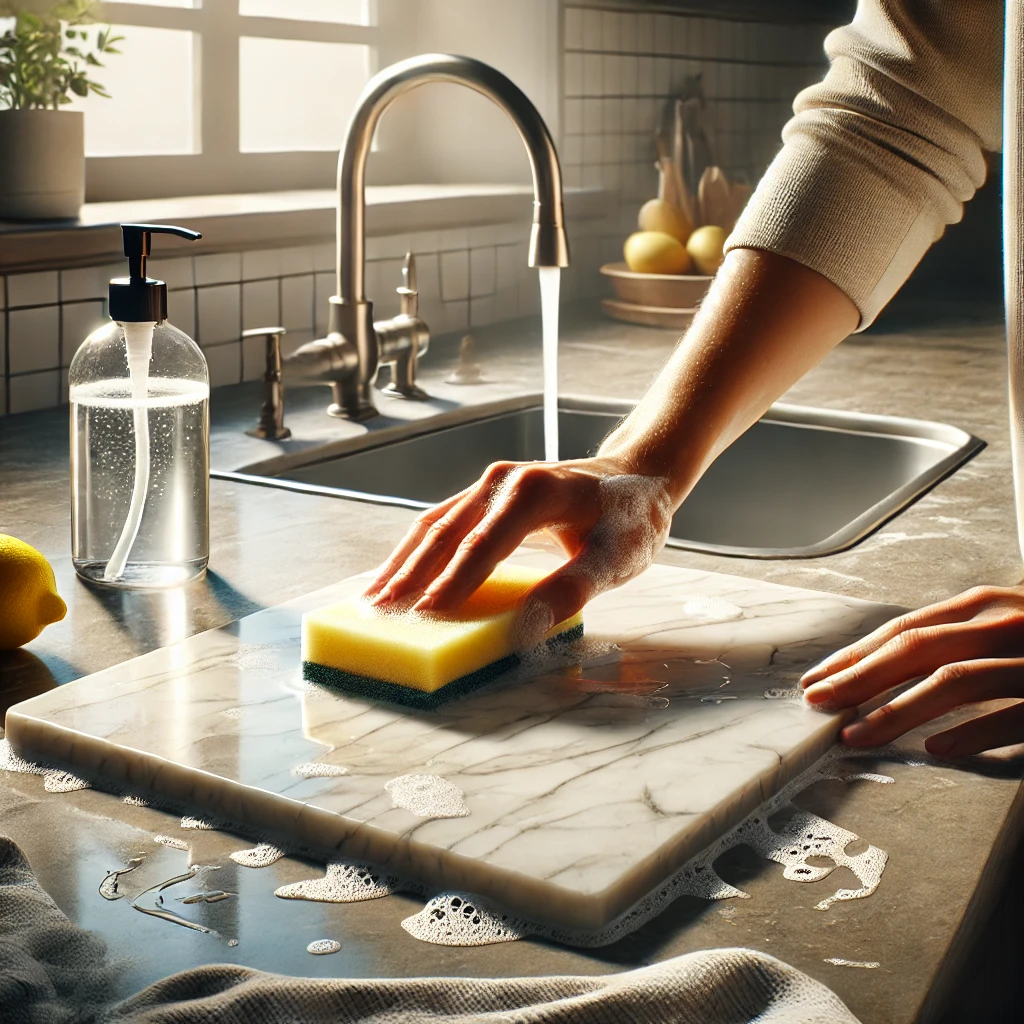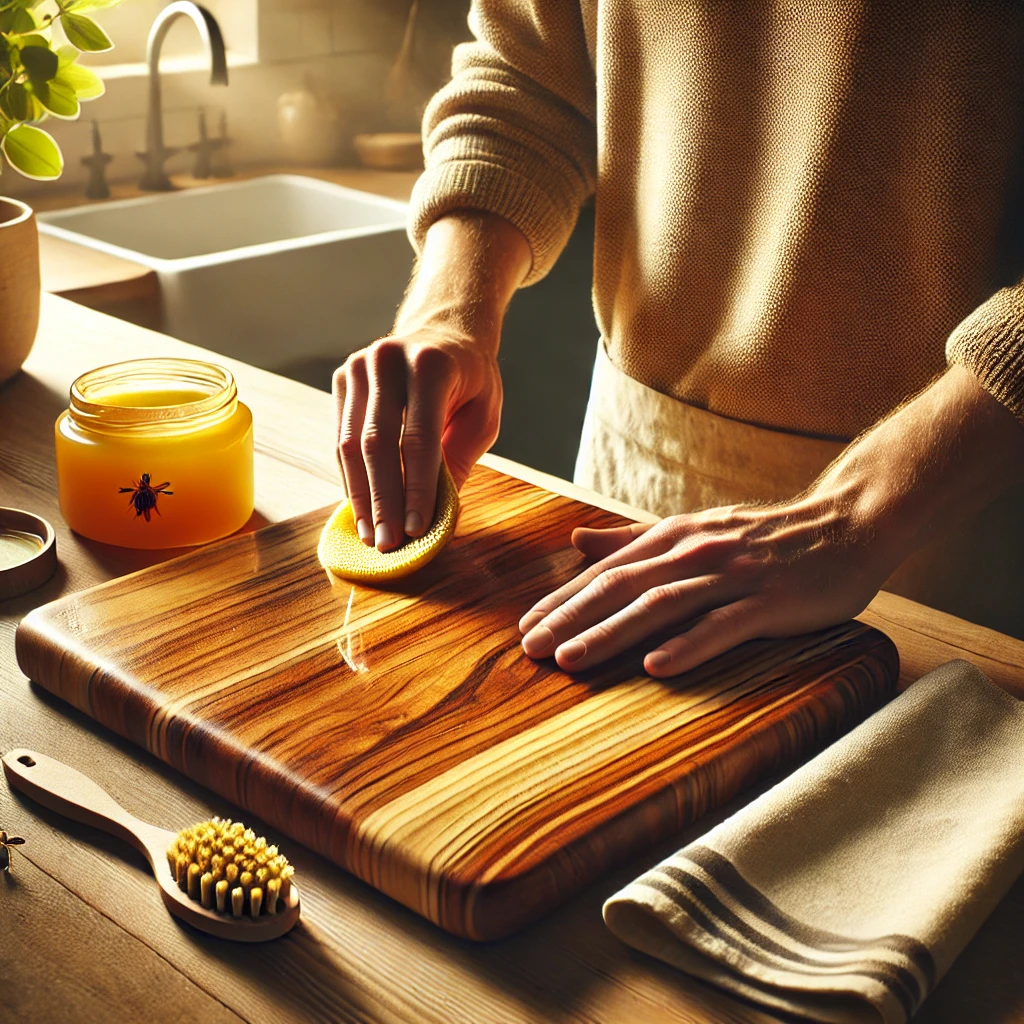A kitchen isn’t properly stocked unless there are several cutting boards at hand. While they might not be the most glamorous cooking tool, cutting boards are really essential in a kitchen – and you may need at least two different kinds to ensure food safety.
Anyone who whips up a home-cooked meal or cleans a kitchen or kitchenette should know the proper way to clean cutting boards, particularly ones that are exposed to food-borne bacteria. You might be a professional cleaner or looking to hire one, a homeowner who does their own kitchen cleaning, or a college student living on your own for the first time and wondering how to DIY cutting board sanitation. Our pros have got the information and cleaning methods you need.
Types of Cutting Boards and What They’re Used For
Cutting boards are made from many commonly-used materials, such as these:
- Plastic
- Wood
- Glass
- Marble
- Composite (two or more different substances)
The best materials for cutting boards are non-porous. Hardwood cutting boards are ideal for things like bread and vegetables. We’d recommend plastic cutting boards for:
We suggest keeping separate cutting boards for different types of food. For example, it’s never a good idea to use the same cutting board for salad vegetables that you would for raw chicken.
Cleaning Products and Supplies to Clean and Sanitize Cutting Boards
Before we get into how to clean various types of cutting boards, here are some of the cleaning products and supplies you should have handy for cleaning and disinfecting cutting boards.
Cleaning Products |
Cleaning Supplies |
Unscented dish soap |
Clean kitchen sponge |
Distilled white vinegar |
Kitchen scrub brush |
Bleach |
Bench scraper/metal spatula |
Baking soda |
Paper towel |
Lemon |
Dish towel |
|
|
You can also use a commercial cutting board spray if you would prefer, but the methods we’re recommending will be less expensive and you won’t need to make any special purchases.
How to Clean a Wood Cutting Board
Wooden cutting boards are popular because they go with any decor and they’re sturdy, potentially lasting for decades. You shouldn’t ever put a wood cutting board into the dishwasher or submerge it in the water. These can both cause the wood to crack or warp.
Please note you can use these same steps if you want to know how to clean a bamboo cutting board.
Step 1: Take your bench scraper or spatula and remove any food scraps or spills from the wooden cutting board: for example, tomato seeds, bread crumbs, peelings, etc.
Step 2: Put hot water and some mild, unscented dish soap in your sink. Take a clean sponge, dip, and then use it to scrub.
Step 3: Rinse the wood board to get rid of soap residue.
Step 4: A paste of equal parts lemon juice and baking soda can be used to scrub at stains and remove them.
Step 5: Soak up as much water as you can with a dry dish towel.
Step 6: Let your wooden cutting board air dry, then put it away again.
Step 7: Once a month, apply either food safe mineral oil or beeswax to restore your board and keep it looking great.
Check out the video below to see the process of applying mineral oil to a wooden cutting board.
How to Clean Plastic Cutting Boards
Plastic cutting boards can usually be counted on to be less costly than wooden boards, but they can still harbor bacteria if you don’t properly clean them.
Step 1: While plastic cutting boards may be marked as dishwasher safe, we recommend hand cleaning to avoid warping.
Step 2: Mix together one quart of water and one teaspoon of bleach.
Step 3: Dip clean sponge and use it to clean your cutting board.
Step 4: Rinse bleach away with water.
Step 5: Prop the plastic board on end to let it air dry completely.
How to Clean Marble Cutting Boards
If you’ve got a lovely marble cutting board, use this method to make sure it’s clean and safe to use.
Step 1: Brush away heavy food particles.
Step 2: Use a sponge and hot water with dish soap to clean the surface.
Step 3: To disinfect, mix equal parts of distilled white vinegar and water and apply to the surface. You can let it sit for a few minutes, but keep in mind that too much acid can actually erode marble.
Step 4: Rinse the board and allow it to air dry.
You should never put marble into the dishwasher.
Comparison of Cutting Board Cleaning Methods
The method you use to clean your cutting board depends on what it’s made of and what the manufacturer recommends.
Cutting board material |
Dish soap and water |
Bleach and water |
Lemon juice and baking soda |
Dishwasher |
Wood |
Yes |
No |
Yes, for stain removal |
No |
Plastic |
Yes |
Yes |
Yes, for stain remover |
Yes, but not recommended |
Marble |
Yes |
No, use vinegar and water instead |
No |
No |
Composite (multiple materials |
Yes |
Read manufacturer instructions |
Read manufacturer instructions |
No |
Composite cutting boards may be made of any combination of materials, including:
- Wood and marble
- Plastic and glass
- Wood and glass
Dish soap and hot water are almost always safe to use. If you still have the manufacturer’s instructions, we recommend reading those first before using any cleaning method we’ve described here.
FAQ
What’s the best method for maintaining cutting boards?
Whatever they’re made of, your cutting boards should be washed after each use and disinfected at least once per month. Wooden boards will look their best if you regularly treat the wood with either beeswax or mineral oil.
Is disinfecting cutting boards necessary?
It definitely is necessary to disinfect cutting boards, especially if you’re using them to cut or prepare raw meat. Our pros disinfect at least once a month, but may do it more often as needed.
Should I oil my wooden cutting board? How often?
Yes, oiling your wooden (or bamboo) cutting board will keep it looking its best. You can use either food-grade mineral oil or food-grade beeswax to do it. We suggest once a month.
When is it time to replace my cutting board?
The timing of a replacement depends on the material. Any board that’s damaged, warped, or heavily scratched up should be replaced for safety’s sake.
Conclusion
Now you know everything you need to know about the best ways to clean and disinfect the cutting boards in your home. If you follow the steps outlined by our pro cleaners, you can expect your boards to last for years and still look great!



